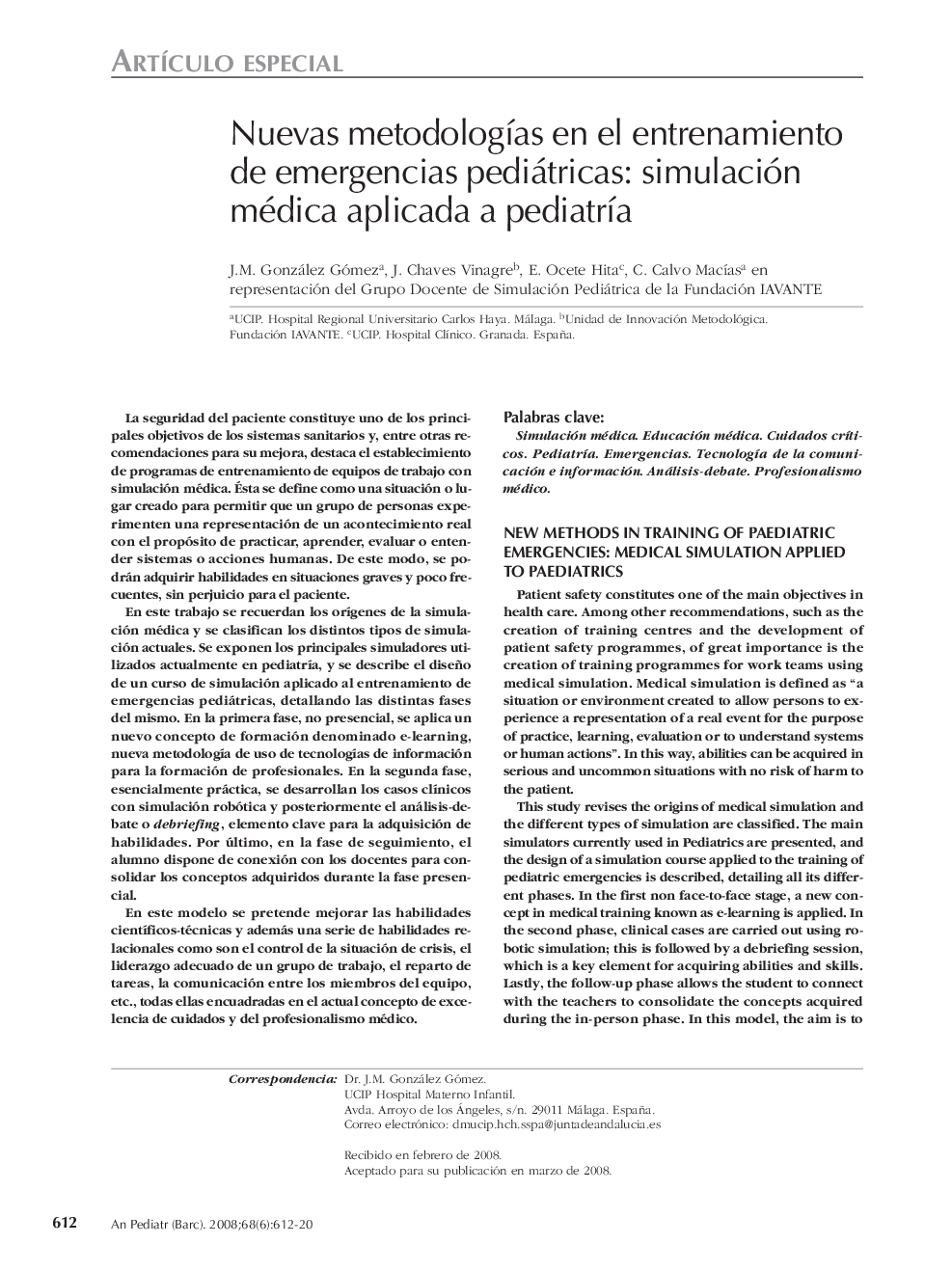| Article ID | Journal | Published Year | Pages | File Type |
|---|---|---|---|---|
| 4143889 | Anales de Pediatría | 2008 | 9 Pages |
Abstract
This study revises the origins of medical simulation and the different types of simulation are classified. The main simulators currently used in Pediatrics are presented, and the design of a simulation course applied to the training of pediatric emergencies is described, detailing all its different phases. In the first non face-to-face stage, a new concept in medical training known as e-learning is applied. In the second phase, clinical cases are carried out using robotic simulation; this is followed by a debriefing session, which is a key element for acquiring abilities and skills. Lastly, the follow-up phase allows the student to connect with the teachers to consolidate the concepts acquired during the in-person phase. In this model, the aim is to improve scientific-technical abilities in addition to a series of related abilities such as controlling crisis situations, correct leadership of work teams, distribution of tasks, communication among the team members, etc., all of these within the present concept of excellence in care and medical professionalism.
Keywords
Related Topics
Health Sciences
Medicine and Dentistry
Perinatology, Pediatrics and Child Health
Authors
J.M. González Gómez, J. Chaves Vinagre, E. Ocete Hita, C. Calvo MacÃas, en representación del Grupo Docente de Simulación Pediátrica de la Fundación IAVANTE en representación del Grupo Docente de Simulación Pediátrica de la Fundación IAVANTE,
